Giant Fossil Fish of Bras d'Or
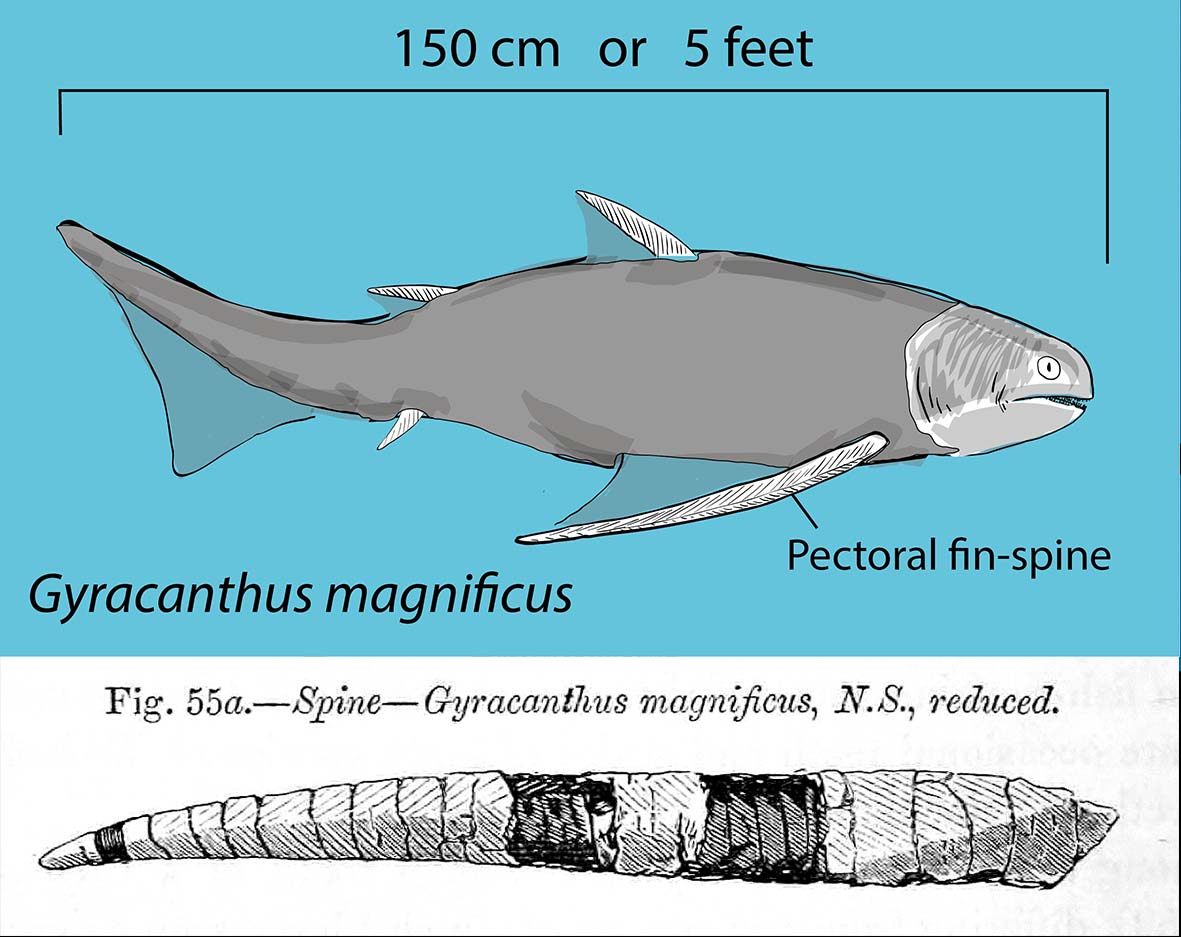
Imagine finding a giant fossil
Even the sound of the name, Gyracanthus magnificus [ Jyra’-can-thus mag-nifi-cus ], evokes excitement, and magnificus this fossil sure is!
The 325 million year old fossil was discovered in the limestone rocks near Baddeck, Nova Scotia in 1866. Gyracanthus magnificus was first mentioned in the scientific literature in Acadian Geology (Dawson 1868).
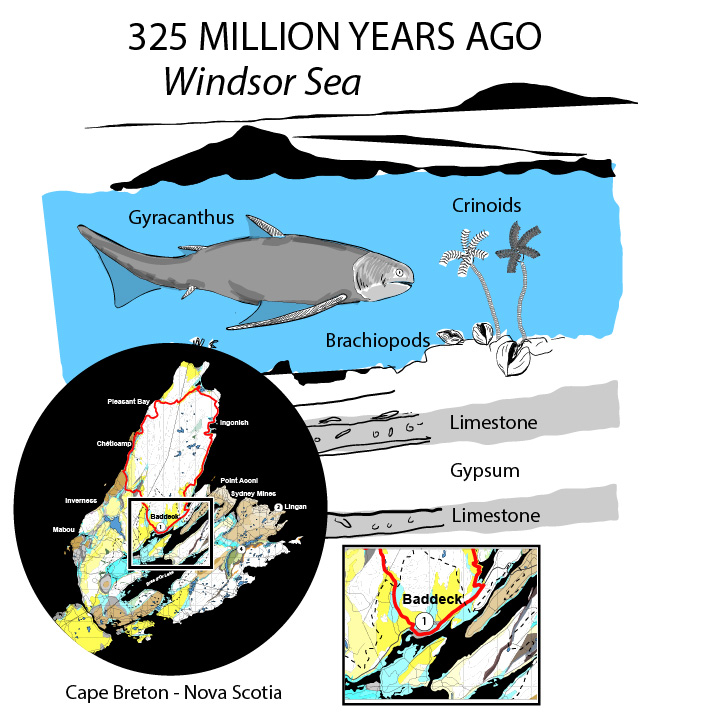
The geology map of Cape Breton includes the light blue area that represents the Windsor Group, limestone and gypsum deposits that formed from an inland sea that covered much of Bras d'Or Lake 325 million year old. The area around Baddeck includes areas with limestone rocks of this age.
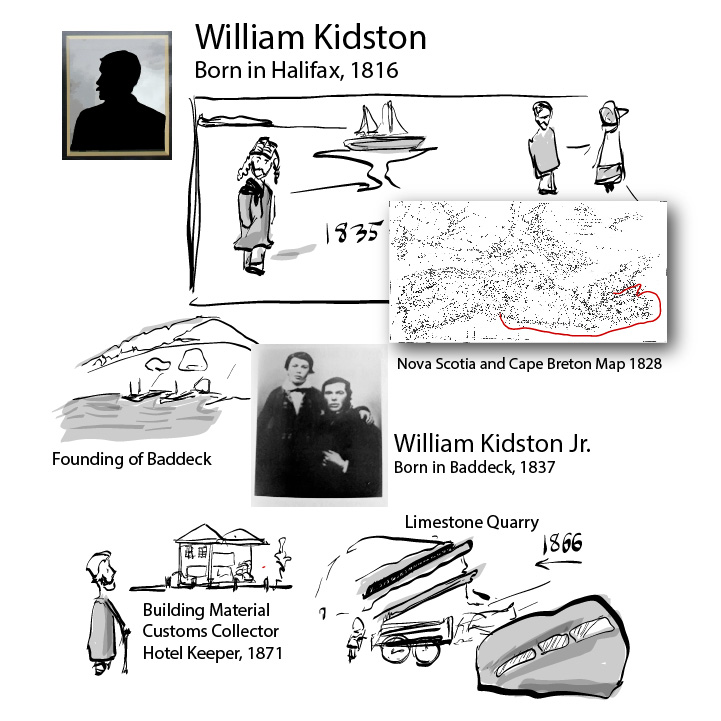
The gigantic fin spine had been found near Baddeck, likely by William Kidston Jr, who was operating a Hotel in Baddeck in 1866. His father, William Kidston (Sr) had moved to the Baddeck area in 1835, and was a provincial politician from 1867-1871 representing Victoria County. The fossil may have been found by William Sr. in the 1840s when Baddeck was just being developed, but there is no records that clarify exactly when and where the fossil was found.
We do know that William Kidston gave the fossil to William Barnes, Mining Engineer.
William Barnes had been hired by the Province to collect fossils from Cape Breton to be displayed at L’Exposition Universelle in Paris 1867.
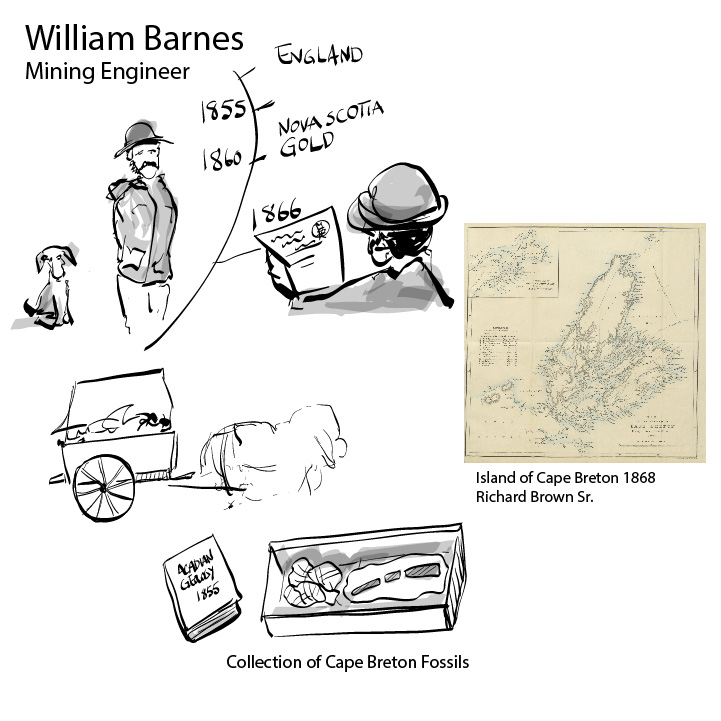
William Barnes had been active in the Nova Scotia Gold Rush of 1862 and had become well known locally as a Mining Engineer. In 1866, Barnes travelled by horse and carriage around Cape Breton, visiting the coal mines and rock outcrops. He would have been using geology maps like the ones published by J. W. Dawson in his book Acadian Geology in 1855.
Later in 1866, William Barnes provided the Cape Breton fossils to Rev. David Honeyman, who was responsible for organizing and supervising the exhibits in Paris. The fossils were then shipped by boat across the Atlantic, and arrived in Paris in the spring of 1867. Over three million people would visit the exhibition between May and October 1867. William Barnes' fossil collection won an Honorable Mention in the awards for the Nova Scotia exhibits.
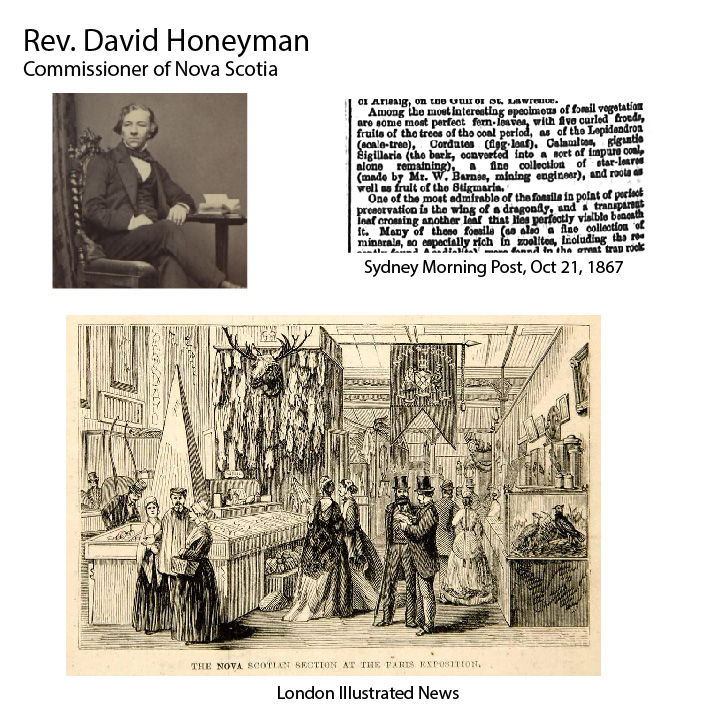
The image from the London Illustrated News shows what the Nova Scotia section of the Paris Exhibition looked like. The Cape Breton fossils, including Gyracanthus magnificus, were likely displayed in the wood cabinets.
New Conservation Underway
For next #FossilFriday we will share an update about new museum conservation work being done to get the fossil ready for display again after one hundred and sixty years.
Blog Post By:
Tim Fedak and Robbie Hussey - Nova Scotia Museum.